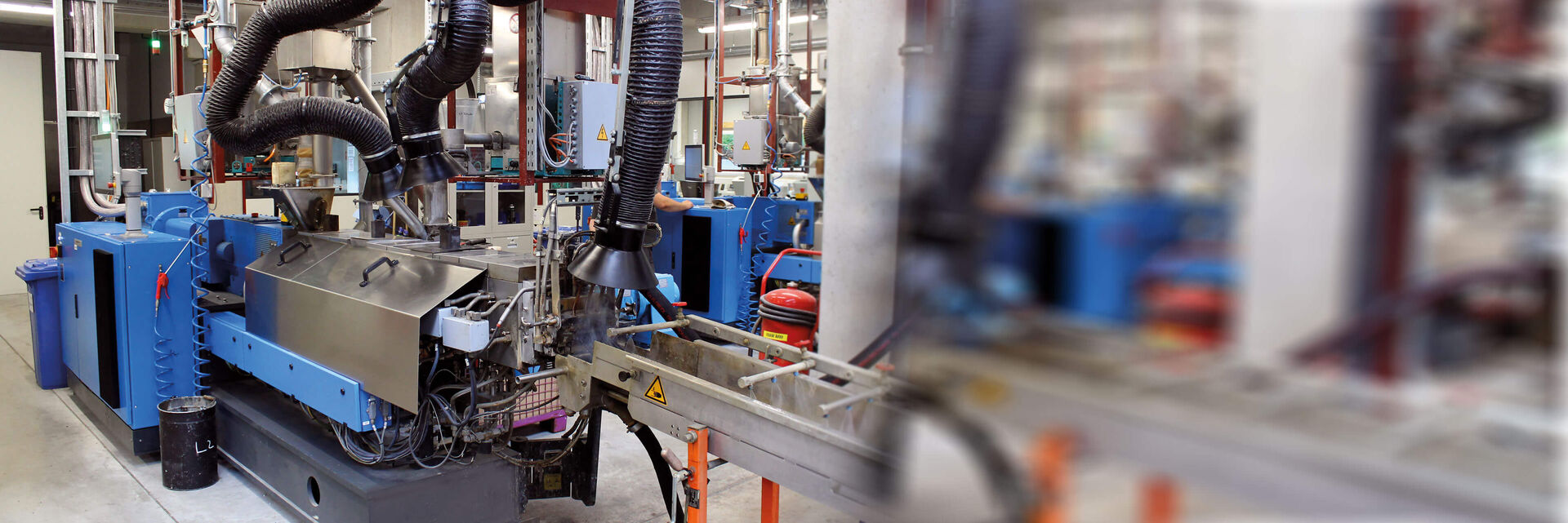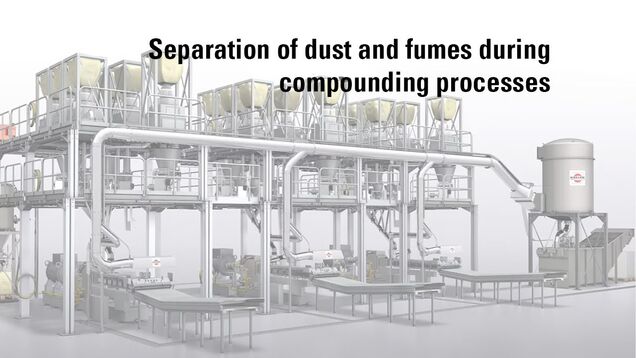Reliable Separation of Emissions and Fumes From Extruders
Considerable demands are placed upon all components to ensure maximum productivity during the refinement and packaging of plastics employing plastics granulation. Besides process technology, a major consideration is the collection of dust and fumes and controlling the air quality inside the workplace.
Keller has extensive experience with the treatment of dust, fumes, gaseous and adhesive aerosols released during compounding and extrusion processes. Utilizing established technology, emissions are extracted thoroughly at the source and separated into either centralized or decentralized systems.
CLEACOM - Established 24/7 Technology
Aerosols and fumes are released during extrusion processes. They are captured with collection hoods, rinsed with water and fed to a wet scrubber. The wet scrubber utilizes water as a filtration medium, with the advantage of maximum operational safety despite any adhesive emissions.
Dust from the processing area (mixing, weighing, feeding) is directed to a dust collector.
Contamination and surface dust are manually extracted by means of an additional dust collection system using a vacuum.
As a general rule, additional designs and configurations are possible, upon request.
References Compounding
These customers rely on our extraction systems during compounding.
Coperion GmbH, Stuttgart - Germany
Aurora Kunststoffe GmbH, Neuenstein - Germany
Celanese Services Germany GmbH, Utzenfeld - Germany
PolyOne Theodor Bergmann GmbH, Gaggenau - Germany
AKRO-PLASTIC GmbH, Niederzissen - Germany
... and many more!
Links
Used Products
Dust Collector VARIO eco >>
Venturi Wet Separator VDN >>
Filter Element KLR-Filter >>
Explosion Protection
Information About "Explosion Protection According to ATEX" >>
Back Pressure Flap ProFlap >>
Flameless Pressure Relief ProVent >>
Set and Guidelines
TA-Luft: Air pollution control - emission standards >>
42. BImSchV: Avoiding legionella risk in wet scrubbers >>
VDI 2262-3: Air quality in the workplace - clean air recirculation >>
TRGS 900: Occupational limit values in the workplace >>
DGUV-Regel 109-002 (formerly: BGR 121): Workplace ventilation >>
1999/92/EG (formerly: ATEX 137): Explosion Protection Directive for Operators >>
2014/34/EU (formerly: ATEX 114): Explosion Protection Directive for Manufacturers >>
EN 1127-1: Explosive environments >>
TRBS 727: Avoiding ignition hazards created by electrostatic charges >>
VDI 2263-6: Fire and explosion protection for dust extraction systems >>































